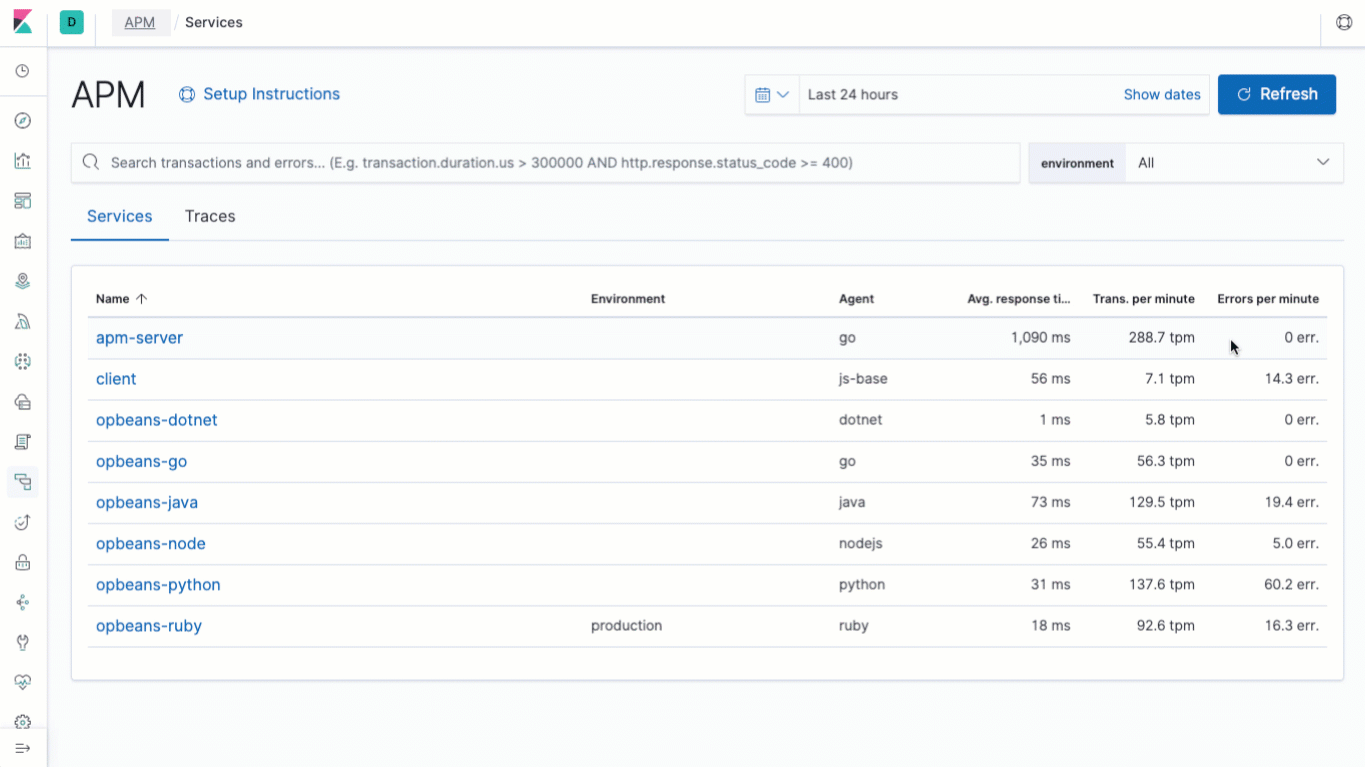Elastic APM 7.2.0 released
We are pleased to announce a new release of Elastic APM, version 7.2.0, available on the Elasticsearch Service, or as part of the default distribution of Elastic Stack. This release brings several frequently-asked-for features, and broadens the scope of what can be instrumented and monitored by Elastic APM, as well as adding the ability to track and differentiate across different phases of the application development lifecycle
.NET Agent in beta, enhanced Java application server support
First and foremost, the .NET agent is now in beta! The .NET agent supports automatic instrumentation for ASP.NET Core 2.x+ and Entity Framework Core 2.x+, while also providing a Public Agent API that allows you to manually instrument your applications using other frameworks. Feel free to try the .NET agent with your development workloads, ask questions on our APM discussion forum, or provide feedback right on the GitHub repo.
To increase the overall observability of your application stack, we've added support to capture agent-specific metrics, which lets you perform more in-depth root cause analysis investigations to within the APM UI, further integrating APM trace data with related metrics, including more detailed Java metrics:

In addition to these Java metrics, support for additional Java application servers, Oracle's WebLogic, and IBM's JBoss, were recently added. All that you need to do to start instrumenting your apps is to is add a few arguments to your Java options environment (JAVA_OPTIONS for WebLogic, or JAVA_OPTS for JBoss EAP/Wildfly). We have also added support for additional network and asynchronous frameworks with the Java agent, including OkHttp, JAX-WS client, and generic support for async spans via the ExecutorService, just to name a few. To see the full list, check out the supported technologies page for items since 1.4.0.
We've also extended the capabilities of the RUM (Real User Monitoring) agent, adding support for Single Page Applications (SPAs). As the name suggests, SPAs load the initial html document only once and use route changes to provide navigation within the application. With the updated RUM agent, we have instrumented the history API which allows the agent to capture route change navigations. While the current implementation requires single-page application developers to configure the agent properly, we plan to release integrations with front-end frameworks to provide route change monitoring with minimal configuration.
Elastic APM agents can now specify the service.environment, allowing you to differentiate between your deployment tiers, whether they be prod, test, or however you break down your application lifecycle.

Elastic APM Server & Application
Elastic APM Server now includes index lifecycle management (ILM) support, allowing you to manage your APM Server indices as they age, automating index rollover as indices reach a specific size or age, without sacrificing visibility.
The Elastic APM App now shows "related errors" on the transaction sample view, also allowing you to jump directly to the corresponding error page. The environment drop-down menu lets you quickly filter your view to a specific environment as a quick alternative to the query bar, with choices automatically filled out based on the available data, making the APM UI even more effective for looking at APM data across phases of software development lifecycle.

Want to see it in action?
You can access the 7.2.0 Elastic APM application on the Elasticsearch Service on Elastic Cloud, or you can download it as part of the default distribution of the Elastic Stack. Grab the APM Server (or leverage the one included with an Elasticsearch Service account), instrument your applications with the APM agents, and start monitoring your applications.